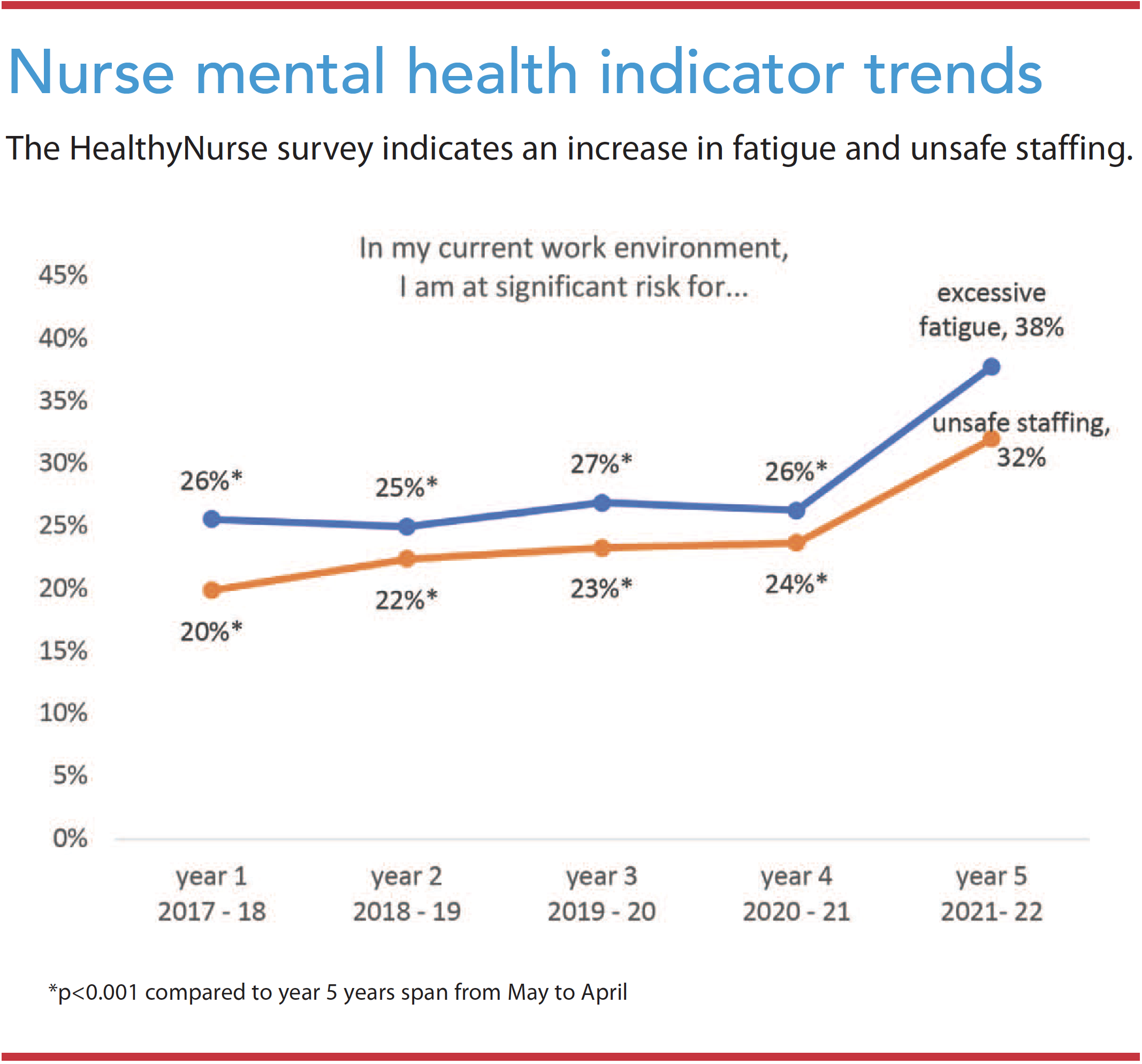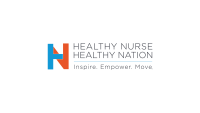Using HNHN survey data to examine trends, address needs
The COVID-19 pandemic has put extraordinary strain on nurses, exacerbating the daily health challenges they already face. Indeed, poor mental health was endemic among nurses even before the pandemic hit. Results from several studies, including the American Nurses Foundation and American Nurses Association (ANA) Pulse on the Nation’s Nurses Survey Series, indicate that nurses report experiencing trauma, anxiety, depression, and burnout caused by COVID-19.
However, because these surveys include only the data collected after the pandemic began, they can’t explain the extent to which mental health indicators changed from before the pandemic compared to now, making it difficult to quantify the toll of COVID-19 on nurses’ health. The ANA Enterprise Healthy Nurse, Healthy Nation™ (HNHN) HealthyNurse® survey fills this gap.
Participants enrolled in HNHN.org receive a prompt to complete the HealthyNurse survey (n=28,487). As an open, continuous survey of nurses since May 2017, its results can illuminate differences in experiences from year to year.
A recent article by Cuccia and colleagues used HealthyNurse survey data to compare the prevalence of anxiety disorder, depression disorder, and feeling sad, down, or depressed for 2 or more weeks from the fourth year of data collection (May 2020 to April 2021) to the previous years.
Findings indicate a significantly higher prevalence of anxiety and depression in year 4, the year that encompassed COVID-19, compared to past years. Nurses who worked in medical-surgical settings consistently had the highest rates of anxiety and depression. Survey data from year 5 (May 2021 to April 2022) indicate that the prevalence of anxiety (20%) and depression (17%) disorders remained high, and that more nurses felt sad, down, or depressed in 2021–2022 (38%) compared to all previous years (37%). Collectively, with other data capturing nurses’ experiences since the pandemic, these results illustrate the impact COVID-19 has taken on nurses’ well-being.
Data from the HealthyNurse survey also shed light on the potential root cause of these mental health indicators. When asked about their daily work experience, about one-third of nurses reported that they’re at significant risk for excessive fatigue (38%) and unsafe staffing (32%) in 2021–2022. The prevalence of both these indicators rose dramatically from prior years, when about a quarter of respondents identified fatigue and staffing as major risk factors. By comparison, the prevalence of all other workplace risk factors remained stable or declined over the past 5 years. (See Nurse mental health indicator trends.)
These findings align with ANA’s call to declare the nurse staffing shortage a national crisis. Understaffed institutions are more likely to have poor patient outcomes, but HealthyNurse findings suggest that staffing also could be related to nurses’ poor health outcomes. ANA and its collaborators in Partners for Nurse Staffing launched the Nurse Staffing Task Force and Nurse Staffing Think Tank in May 2022 to develop strategic advice and operationalize solutions to this crisis. The Think Tank also created recommendations to guide and measure staffing strategies. (Read the report at bit.ly/3R2z4gT.)
The longevity of the HealthyNurse survey data illuminates trends and validates the stories and experiences that nurses report. These findings should be used to address urgent needs within the profession.
Alison Cuccia is a research and program manager at ANA.
References
Cuccia AF, Peterson C, Melnyk BM, Boston‐Leary K. Trends in mental health indicators among nurses participating in Healthy Nurse, Healthy Nation from 2017 to 2021. Worldviews Evid Based Nurs. 2022. doi: 10.1111/wvn.12601
American Nurse Journal. 2022; 27 (11). Doi: 10.51256/ANJ112218



















